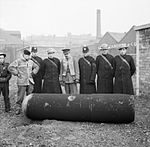St Peter the Apostle High School
St Peter the Apostle High School is a Roman Catholic high school in Drumry, Clydebank, Scotland. It was formed as an amalgamation of the former St Columba's High School and St Andrew's High School. St Peter the Apostle High School is one of two Roman Catholic secondary schools in West Dunbartonshire. St Peter the Apostle High School is a Roman Catholic comprehensive school serving the northern part of Clydebank, the village of Duntocher, Faifley, Hardgate and the Drumchapel area of Glasgow. Students come in substantial numbers from Old Kilpatrick, Knightswood and Scotstoun. Five primary schools provide the great majority of the first-year intake including; St Mary's Primary School, St Joseph's Primary School, St Eunan's Primary School, St Stephen's Primary School, and St Clare's Primary School, although a variety of others add to this number.
Excerpt from the Wikipedia article St Peter the Apostle High School (License: CC BY-SA 3.0, Authors).St Peter the Apostle High School
Kirkoswald Drive,
Geographical coordinates (GPS) Address Phone number Website External links Nearby Places Show on map
Geographical coordinates (GPS)
| Latitude | Longitude |
|---|---|
| N 55.9145 ° | E -4.398 ° |
Address
St Peter the Apostle High School
Kirkoswald Drive
G81 2DB , Drumry
Scotland, United Kingdom
Open on Google Maps







